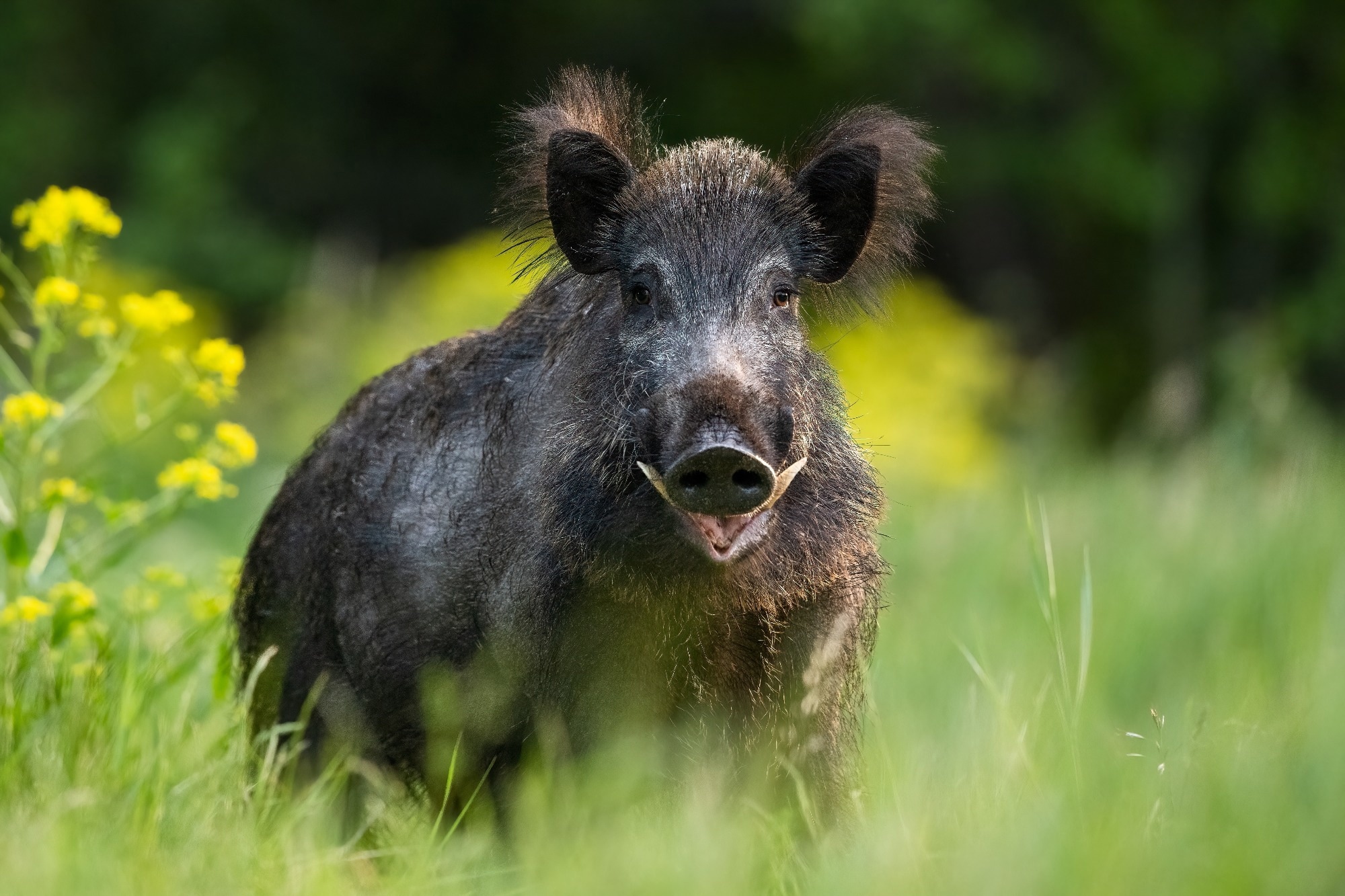In a recent study published in Tropical Medicine and Infectious Disease, a group of researchers assessed the prevalence of the Hepatitis E virus (HEV) in the Portuguese wild boar population and determined the zoonotic risk for hunters, especially in potential HEV hotspots.
 Study: Hepatitis E Virus in the Wild Boar Population: What Is the Real Zoonotic Risk in Portugal? Image Credit: Erik Mandre/Shutterstock.com
Study: Hepatitis E Virus in the Wild Boar Population: What Is the Real Zoonotic Risk in Portugal? Image Credit: Erik Mandre/Shutterstock.com
Background
HEV, a ribonucleic acid (RNA) virus classified as Paslahepevirus balayani with eight genotypes, is a prominent zoonotic pathogen found in animals.
While HEV-1 and HEV-2 predominantly affect humans in developing countries and spread through contaminated food or water, HEV-3 and HEV-4 are zoonotic, impacting both humans and various animal species, often leading to self-limiting liver disease but posing a heightened risk to pregnant women.
Recent data from the European Food Safety Authority (EFSA) highlights the rise in HEV-3 cases in Europe, pointing towards pigs and wild boars as the main carriers. The rising consumption of wild boar meat, especially when raw or undercooked, is alarming due to its potential as an HEV transmission vector.
While studies from countries like Spain and Sweden have identified a link between HEV and wild boar consumption, this emerging zoonosis is of particular concern in places like Portugal, where research on HEV in wild boars remains limited.
Considering the hunting traditions and consumption habits, further research is necessary to understand the HEV prevalence in Portugal's wild boar population and its zoonotic risk, focusing on hunters as a vulnerable group.
About the study
During the 2021/2022 hunting season, 123 samples (liver and blood) were collected from wild boars across Portugal.
These samples, taken post-harvest from various regions during legal hunting activities, were each linked to data such as the location, sex, and age of the hunted animal. The liver, fecal matter, and blood samples were transported to a lab for processing and analysis.
In the lab, the liver and fecal samples were prepared and tested for HEV using Polymerase Chain Reaction (PCR) assays, following established protocols involving specific processes to extract and purify RNA.
A particular nested PCR test was employed to detect HEV in these samples. Additionally, any positive samples were further analyzed using bi-directional sequencing and were compared with sequences in a known database.
Blood samples underwent serological testing for HEV, with the serum derived from these samples being tested using an established kit and protocol. Simultaneously, a survey was conducted among 106 hunters across Portugal, mainly focusing on their consumption habits and practices related to wild boar meat.
The survey included questions about potential HEV exposure, liver consumption habits, and traditional hunting practices.
Lastly, statistical analysis was performed to discern any associations between the results and known risk factors for HEV infection in wild boars. Data was interpreted using specific tools, with significance set at a probability value (p-value) of less than 0.05.
Study results
In the present study, molecular detection of the HEV in the liver and feces of wild boars in Portugal was undertaken. The liver, typically considered the best sample for virus detection, surprisingly yielded only a single positive result, representing 0.8% of the tested samples, and it came from an adult female wild boar hunted in Central Portugal.
Similarly, fecal testing yielded a single positive result at the same prevalence rate, but this time from an adult male wild boar in Southern Portugal.
In total, only two samples tested positive for HEV. Genetic analysis showed that the positive liver sample shared a significant genetic similarity of 94.55% with another HEV sample from a wild boar in Portugal, whereas the positive fecal sample exhibited a 97.22% identity with a sample from a wild boar in Spain.
Both of these detected HEV sequences, classified under genotype 3, were subsequently logged into the GenBank database, ensuring the assignment of unique accession numbers for future reference.
Next, the serological detection phase aimed to identify the presence of HEV antibodies in blood samples. Of the total samples tested, 27.6% or 34 samples were positive for HEV antibodies.
Delving deeper into regional analysis, it was observed that Portugal's northern and southern regions had comparable seroprevalence rates of 17% and 23%, respectively.
However, the central region displayed a heightened seroprevalence rate of 34%. Yet, a statistical analysis of these regional figures determined no significant correlation between the geographic location of the wild boars and their HEV infection rates.
Upon further examination of the samples based on the age of the animals, it was found that there was a significant relationship between age and the likelihood of HEV presence. Adult wild boars exhibited a 4.13 times higher probability of having HEV compared to their younger counterparts, while the sex of the animal did not significantly impact HEV infection rates.
Lastly, a survey conducted among 106 hunters aimed to understand their interactions and habits concerning wild boars. A majority, 76.4%, claimed they had never consumed wild boar liver, while about 19.8% sometimes consumed it and 3.8% always did.
Only three hunters admitted to the possibility when quizzed about the potential undercooking of the liver. Interestingly, when asked about the traditional hunting baptism ritual, where raw liver is rubbed on the face, 49% of respondents had not witnessed it, 47.2% had seen it occasionally, and 3.8% always observed the ritual.
Conclusions
To summarize, over the last 15 years in Europe, HEV prevalence in wild boars has varied, notably in liver samples (ranging from 1.9% to 52.2%). High values were observed in Italy, Romania, Portugal, and Lithuania, while some studies reported lower rates, including a recent Portuguese study (0.8%). Serological analysis showed Portugal's results aligned with the European average (27.6%).
Recommendations include thorough cooking, gloves for hunters, reconsidering traditional practices, avoiding carcass contamination, testing meat cuts, enhancing control programs, and educating hunters on safe slaughtering.
HEV's zoonotic potential underscores the importance of vigilance in handling and consuming wild boar products.